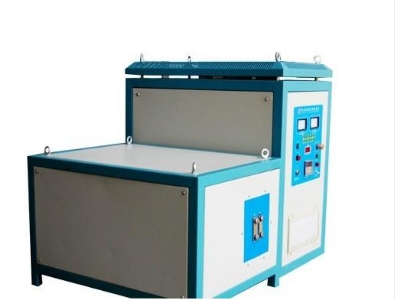- 12
- May
Method for quenching the inner diameter surface of small hole parts by high-frequency induction heating equipment
Method for quenching the inner diameter surface of small hole parts by högfrekvent induktionsvärmeutrustning
High-frequency induction heating equipment can use spiral wire inductors for surface hardening of the inner diameter of small hole parts: the material of a small hole part is 45 steel. The inner diameter of the hole with a diameter of 20mm requires high-frequency induction heating and quenching, the depth of the hardened layer is 0.8-1.0mm, and the hardness is 50-60HRC. It is found in production that it is difficult to heat and quench small holes with a diameter of 20mm using high-frequency induction equipment. On the one hand, conventional inner hole inductors are not easy to manufacture, and it is more difficult to insert magnets; on the other hand, regardless of whether the inductor is used to spray water, It still uses a special water jacket jet cooling method, which has poor quenching and cooling effect on the workpiece, and the hardness of the inner hole is uneven, which cannot meet the technical requirements.
The high-frequency induction heating and quenching inductor used to be an inductor wound from a pure copper tube with a diameter of 4mm, with an outer diameter of 16mm, a pitch of 7mm, a total of 3 turns, and flowing water cooling inside. In use, it is found that the inductor is not only difficult to manufacture, and the cooling water is not flowing smoothly, so that the heating temperature is uneven. After quenching and heating, it is watered and cooled. Incomplete, so the hardness of the workpiece after quenching is uneven, which fails to meet the technical requirements.
After many researches, the spiral wire inductor was developed and customized, and the spiral wire inductor submerged water quenching process test was carried out. The equipment adopts high frequency induction heating equipment. The process parameters are as follows: the power supply voltage is 380-400V, the grid current is 1.2-1.5A, the anode current is 3-5A, the anode voltage is 7-9kV, the tank circuit voltage is 6-7kV, and the heating time is 2-2.5s. When the high-frequency induction heating equipment heats up, the surface temperature of the workpiece rises, and the surrounding water is vaporized to form a stable vapor film surrounding the workpiece, which isolates the workpiece from the flowing cooling water. The steam film has poor heat conduction and plays a role of insulation and heat preservation, and the temperature of the workpiece rapidly rises to the quenching temperature and is quenched. At this time, the power is cut off, the steam film on the surface of the workpiece is broken, the workpiece is rapidly cooled by the flowing cooling water, the structure transformation is completed, and the surface of the workpiece is hardened. The test results are as follows: the inner diameter hardness of the inner hole is 55-63HRC, the hardened layer depth is 1.0-1.5mm, the hardness distribution is uniform, the hole shrinkage is about 0.015-0.03mm, the deformation is small, and the technical requirements are met. The production efficiency is 200 pieces/h .
Although the submerged water quenching test of the spiral wire inductor has a good effect on the quenching of the inner diameter of the small hole, we should pay attention to the following points in the production:
1. Because the copper wire is relatively thin and rigid, the pitch cannot be too small, otherwise it is easy to contact each other and cause a short circuit after power on; but if the pitch is too large, the heating will be uneven and the hardness of the hardened layer will be uneven. The number of turns is related to the thickness of the workpiece. If the number of turns is too small, the hardness of the hardened layer will be uneven. If there are too many turns, the impedance of the inductor will be large and the heating effect will decrease. The pitch of the inductor and the number of turns should be selected appropriately to make the quenching performance effective.
2. The heating effect of copper wire diameter is 2mm, and other types are easy to burn.
3. The inductor has a thin copper wire and poor rigidity. It will vibrate under the action of a magnetic field after it is energized. In order to prevent the inductor from vibration, ignition and burnout, a sensor reinforcement device is designed to reduce vibration.

